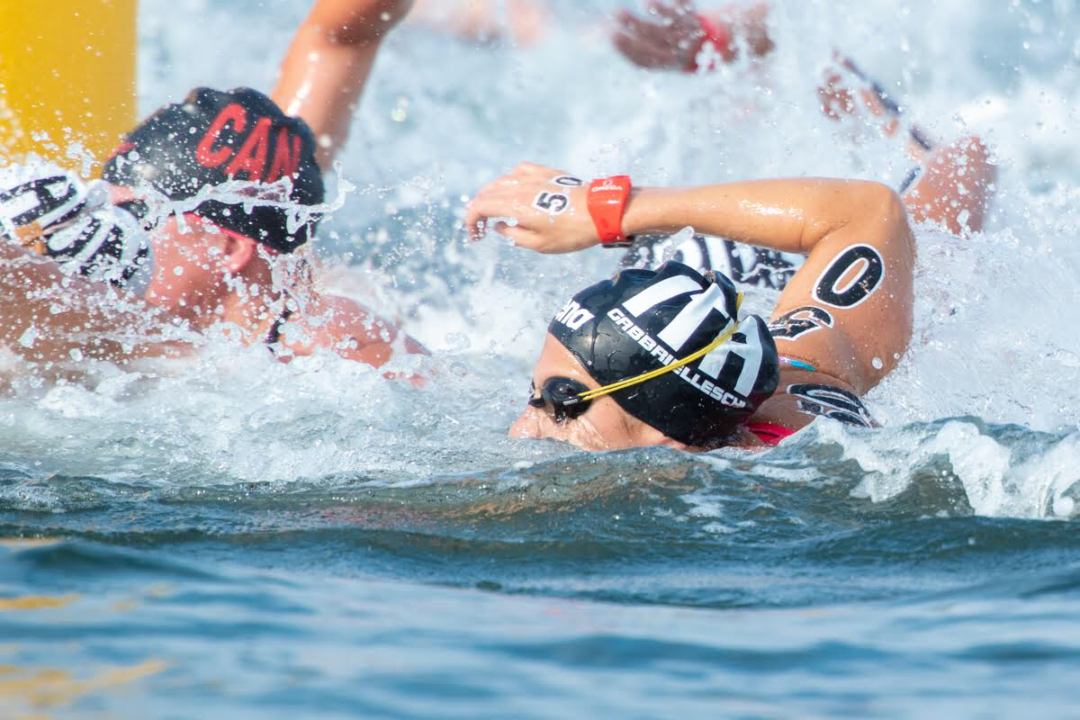According to Japan’s national broadcaster NHK, Tokyo’s Metropolitan Government has begun work to improve water quality at a venue of this year’s Olympic and Paralympic Games.
Tokyo’s government revealed a plan to install a triple-layer underwater screen to block E. coli bacteria in addition to pouring a large amount of sand mixed together with clams and other shells into the water to cover mud accumulated on the seabed. Tokyo officials say an estimated 720 tons of sand were dumped into the water off the coast of the park on Saturday, and plan to pour a total of 19,800 tons of sand into the water by the end of March.
Though Odaiba Marine Park‘s water quality and temperature have been a recurring concern ahead of next summer’s Games.
In a Q&A hosted last week by NBC Olympics on Reddit, Olympian Haley Anderson addressed a question regarding open water conditions for the upcoming Tokyo Games. Anderson indicated that athletes have voiced concerns that have “gone unheard.”
Last August, athletes including three-time Olympic medalist Ous Mellouli voiced their concerns after participating in an Olympic open water test event in Odaiba Marine Park, Japan. “That was the warmest race I’ve ever done,” Mellouli said at the time. “It felt good for the first 2km then I got super overheated.” Japanese swimmer Yumi Kida added that the water was “a little stinky” and that clarity was poor.
In August, too, the International Triathlon Union’s Paratriathlon World Cup in Tokyo saw its swimming leg canceled due to poor water quality at the city’s Odaiba Marine Park. The E. coli bacteria found in a test conducted was reportedly two times higher than the limit set by the ITU.
We reported back in 2017 how tests conducted on 21 days mirroring the scheduled dates of the Games revealed that day-to-day water quality at Odaiba varies significantly depending on weather conditions, particularly on whether or not it had rained
In the summer of 2017, water tests conducted revealed that day-to-day water quality at Odaiba varied significantly depending on weather conditions, particularly on whether or not it had rained.
Of the samples collected over the test period, just 10 days saw the marathon swimming water quality standards meet those specified by FINA, while only 6 days saw the triathlon quality standards meet those specified by the International Triathlon Union (ITU).
Tokyo 2020 organizers have pledged to keep the water clean and safe ongoing, however, time is running out for the water quality to be improved by August short of six months until the Games kick-off.
In late 2018, Tokyo officials announced that they had been able to use underwater triple-layer screens to improve the water’s quality.
This year, the Committee installed a single-layer screen for last August’s open-water test event, and plan to apply a triple-layer screen next summer at the Olympics.
These screens are designed to keep disease-causing agents like E. coli away from the swimmers.

What is being done to address the concerns about the water temperature? Not a great way to encourage athletes to participate in open water swimming.
How about just hold the event at a location where the water is already clean?
Japan is planning to dump its radio active water from Fukushima into the Pacific . After the Olympics .